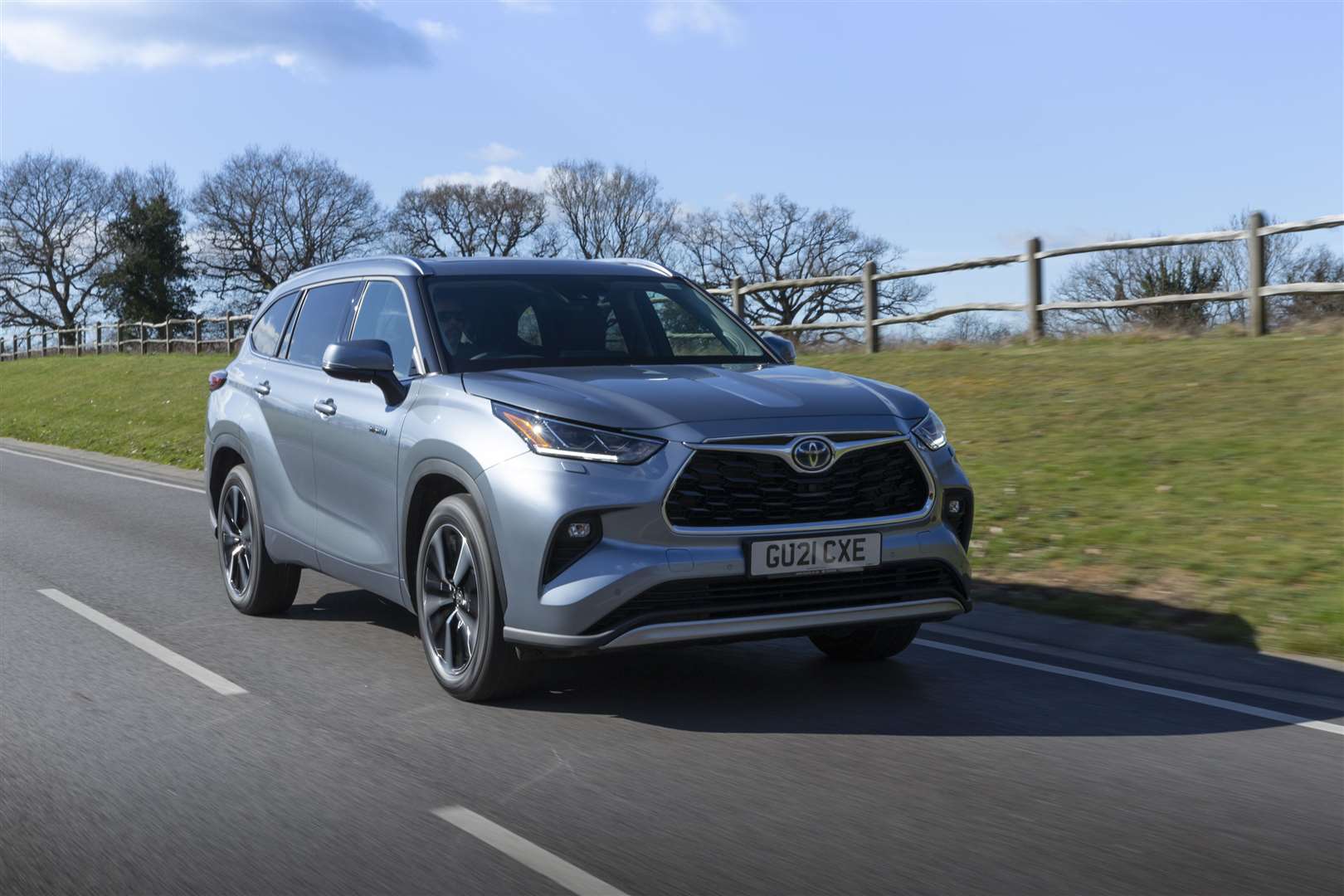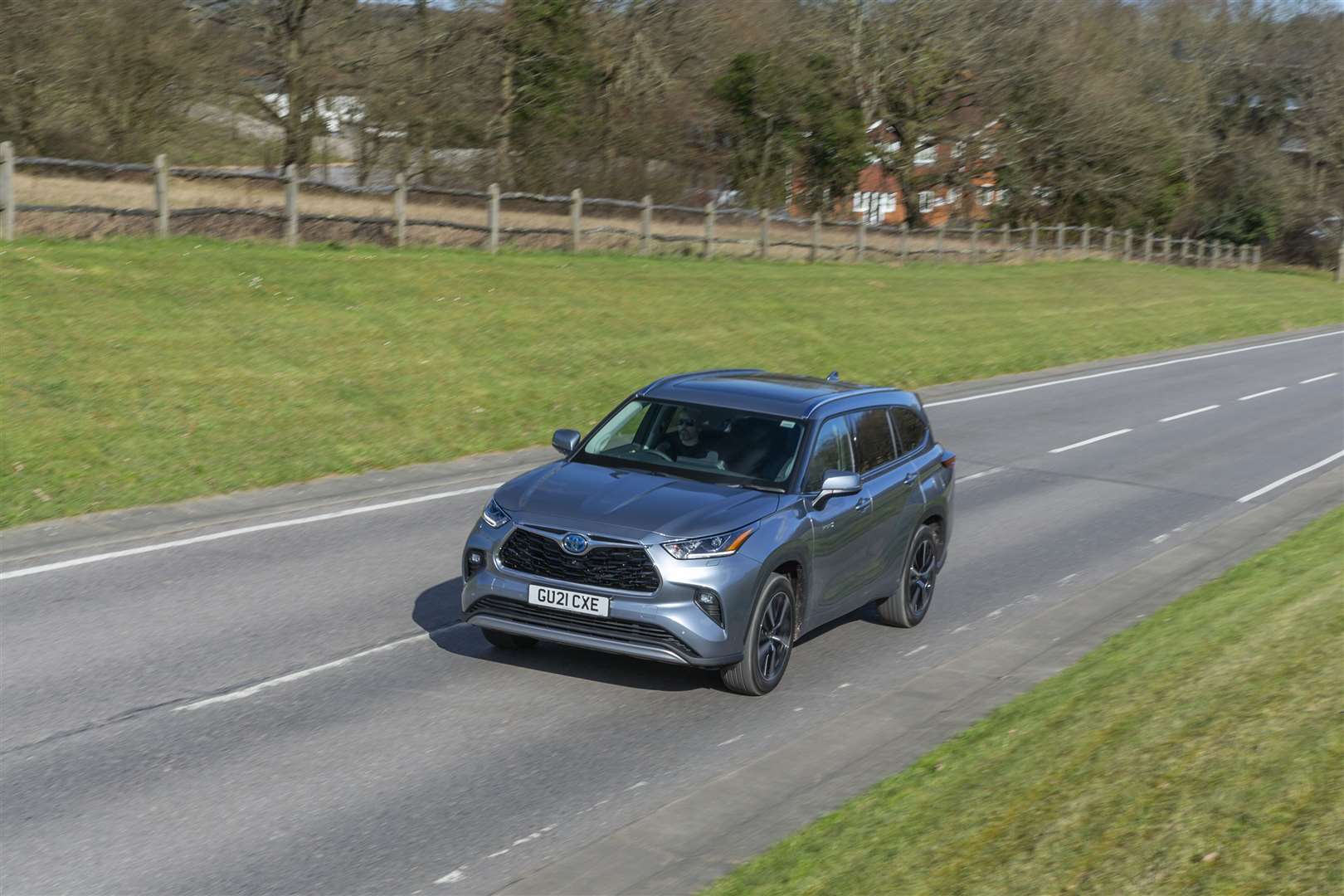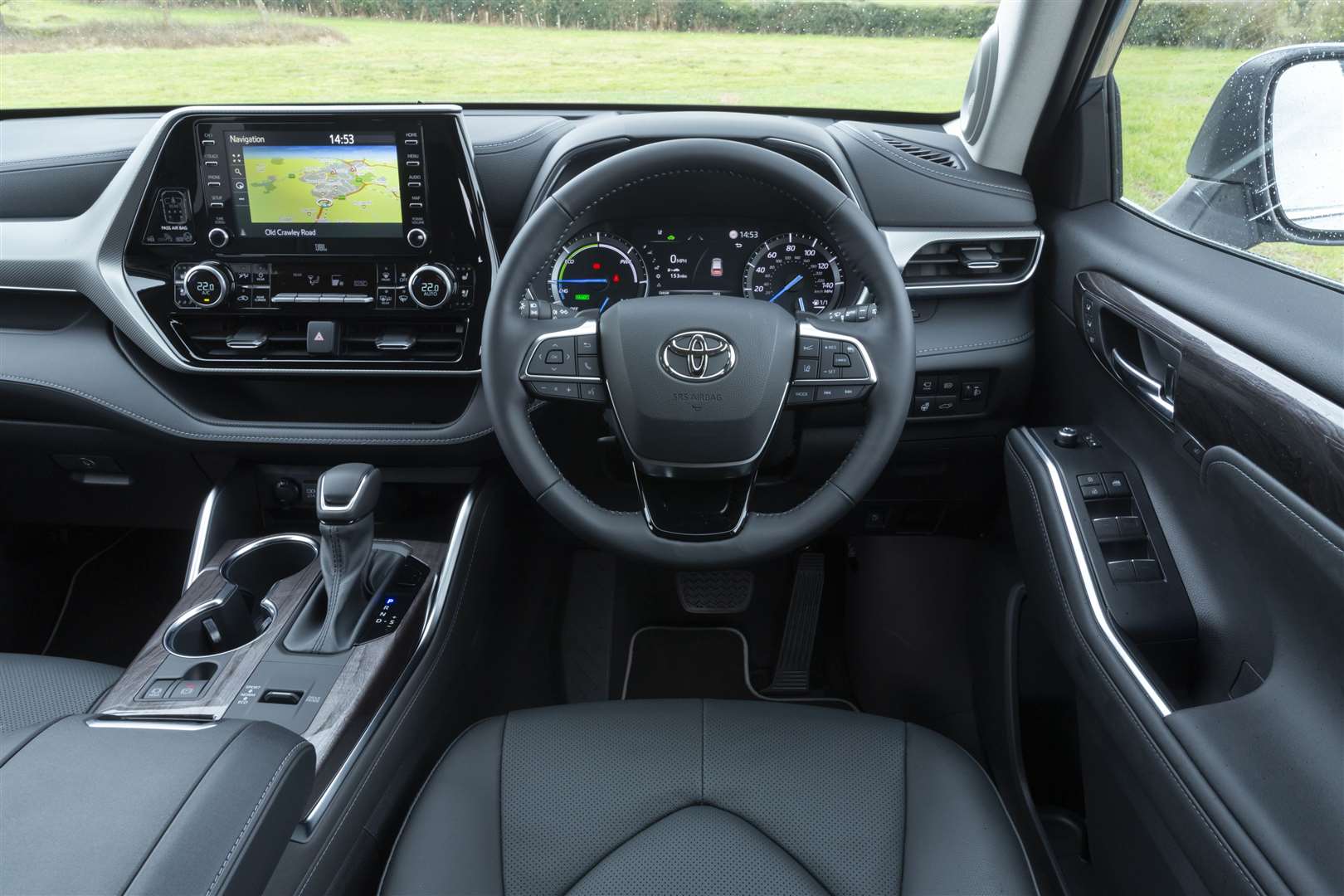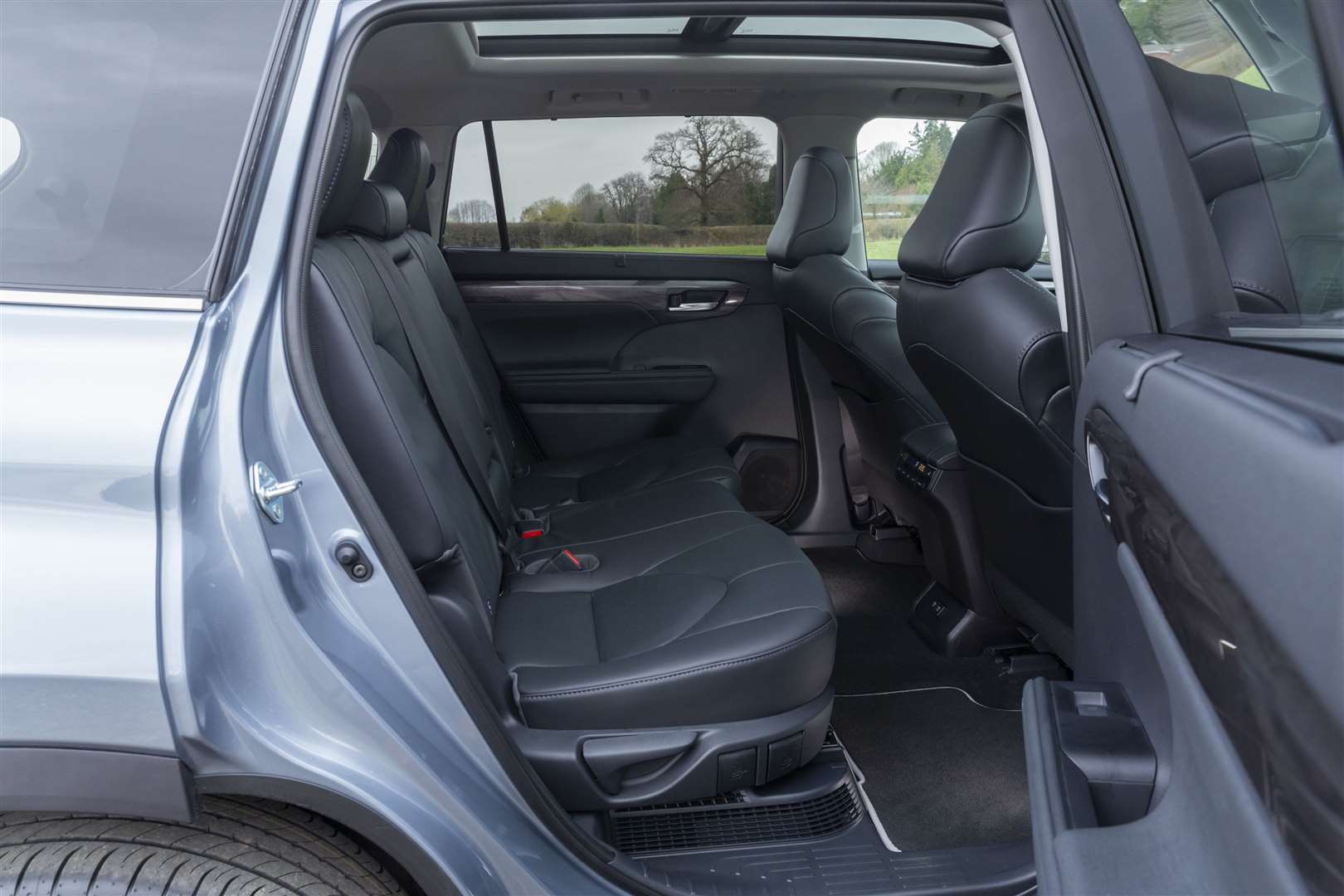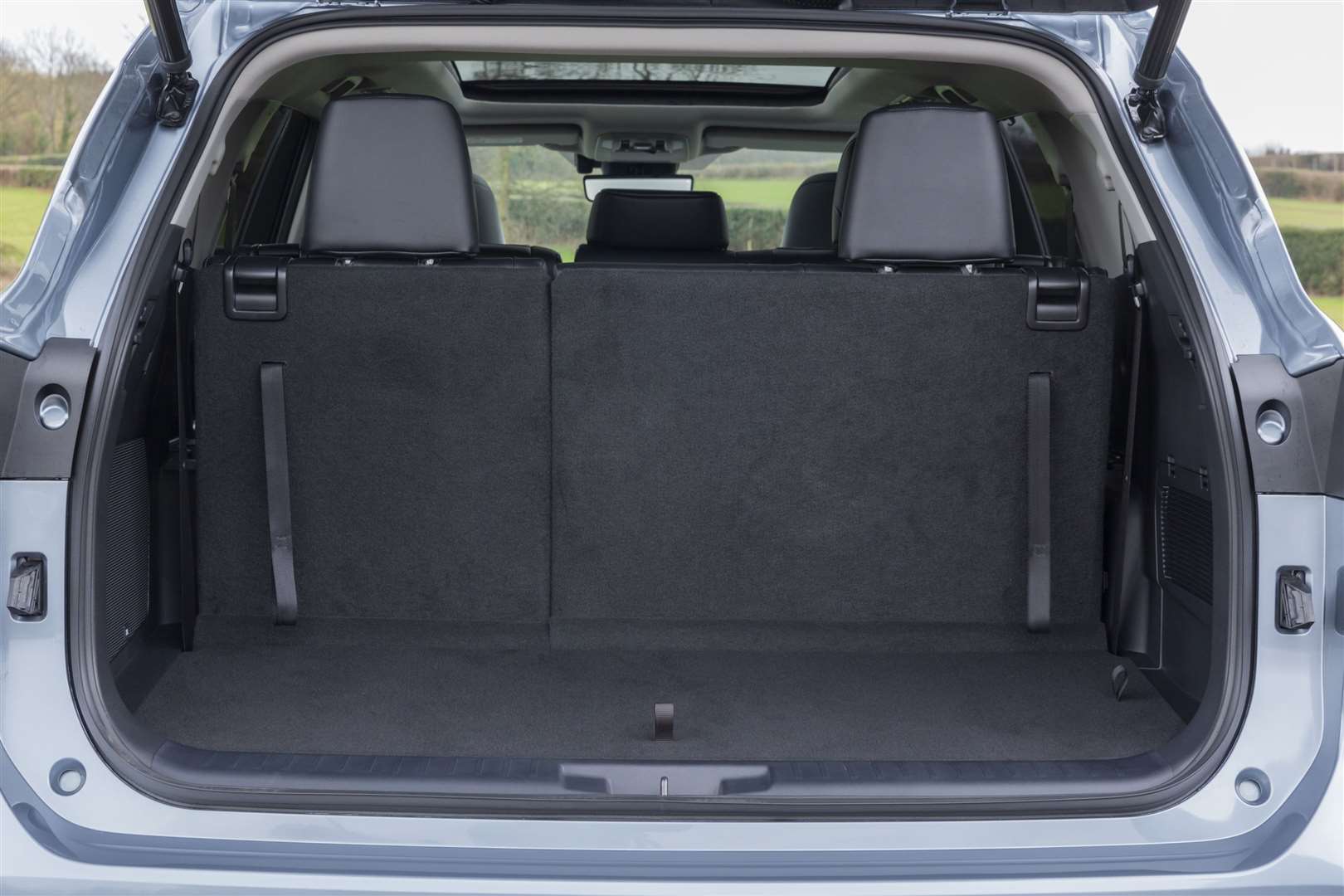Home News Kent Motors news Article
Toyota Highlander Excel 2.5 Petrol hybrid AWS-i
10:55, 11 October 2022
updated: 10:56, 11 October 2022
Toyota’s Highlander is a full-size SUV and then some. It’s almost five metres long and will accommodate seven adults. It’s safe to assume, then, that you get lots of space. What you don’t get, though, it’s lots of choice. There’s one powertrain – a 2.5-litre petrol engine mated to a hybrid system – and one trim level which, maybe unnecessarily, has a name: Excel Premium. There’s only a few dealer-fit accessories to choose from, too.
The hybrid powertrain is not of the plug-in variety, so that means the small battery is topped up using a combination of energy recovery under braking and, when necessary, the engine.
You may not get much choice when it comes to personalising a new Highlander but why buy one at all when there are plenty of alternatives to pick from. Some of them wear premium badges but others – the Hyundai Sante Fe, Kia Sorento and Peugeot 5008 – don’t and all are cheaper.
Read on to find out if the Highlander manages to justify its price tag and a place on your drive.
You’d expect something as gargantuan as the Highlander to offer up a significant amount of passenger space and it doesn’t disappoint. There’s plenty of room for heads legs and shoulders in the front of the car.
Passengers in the middle row of seats enjoy a generous amount of legroom, especially with the bench slid to its rearmost position. Headroom, though, isn’t as good as you might hope and that’s the fault of the standard-fit panoramic glass roof. It lowers the height of the roof at the outer edges. Anyone who’s six foot-plus might struggle to sit up straight.
The width of the car means that you can sit three people across the rear without any trouble, even if there is a degree of enforced slouching.
The rear-most row of seats have to manually lifted into position. There’s no assistance when moving the middle row forward to access them either, but neither task requires a great deal of muscle, and climbing in and out of the back is made easy thanks to the Highlander’s large rear doors.
What is a little disappointing the amount of space, or lack of, afforded passengers in the back, especially when you compare it to some of its closest rivals. Only smaller adults and children will enjoy a semblance of comfort while anyone with longer legs will be begging anyone sitting ahead of them to slide the middle row forward as much as possible.
The door bins are not that big, but there is some compensation by way of a massive central storage area between the front seats, a small cubby in front of the gear selector, a shelf above it and another ahead of the front-seat passenger.
The rear seats, as well as sliding fore and aft, can also be reclined or folded flat in a 60/40 split. With all seven seats in place luggage capacity is significantly reduced, unsurprisingly, with room for just a few bags of shopping (332 litres), although there is a small amount of storage under the boot floor.
With all bar the front seats stowed away, there’s 1,909 litres of luggage space, which is about the equivalent of a small van.
The driver’s seat is electrically adjustable with memory function and lumbar support adjustment. Seat, pedals and steering wheel are all nicely aligned so it’s a simple trick to find a suitable driving position. There’s not much in the way of side support so you might find yourself sliding around a bit when you’re going through corners.
Visibility is good, thanks in no small way to a seating position lofty enough to guarantee that you’ll be looking down on just about anyone else on the road. The thin A-pillars, good-sized side windows and reasonably slender rear pillars ensure that the all-round view out is good enough to make parking, despite the Highlander’s size, quite straightforward. You’ll get the benefit of front and rear parking sensors and a 360-degree bird’s eye-view camera fitted as standard.
The dashboard is nicely laid out, with all the controls where you might expect to find and all within easy reach. The air-conditioning is blessed with large, clearly-labelled physical buttons and dials.
The quality of the interior is decent enough. I have no complaints about how robust everything feels, nor about the quality of the craftmanship, and it certainly stands scrutiny against its nearest rivals but it doesn’t have the premium feel of upmarket opposition from, say, Land Rover or Volvo.
There are harder, cheaper feeling plastics withing easy reach, on the door for example, and the centre console that sits between driver and passenger feels a little flimsy. The seats are all leather, though.
All things infotainment is accessed via an eight-inch touchscreen in the centre of the dashboard. It’s got all the basics – DAB radio, Android Auto and Apple CarPlay, built-in sat-nav, wireless phone charging and a decent 11-speaker JBL stereo – is flanked by useful shortcut buttons and responds reasonably quickly to touch inputs.
The graphics, however, aren’t that great and the operating system could do with an update to make it more intuitive.
The Highlander is a self-charging hybrid, which means that you don’t have to worry about plugging it in over night because the on-board system will take care of that using, as I mentioned earlier, either the engine or energy recovered under braking.
The system is designed to work intuitively, using the most appropriate power source depending on how the car is being driven at the time. If you pull away gently and there is some charge in the battery you’ll do so using electric power alone. In stop-start traffic that ensures progress is smooth and serene.
You can force the Highlander to use battery power with the press of a button. It’s marked EV. It’s a bit of a pointless exercise, however, because it only functions when specific conditions are met and, even then, even if the road is flat and you’re especially restrained with your right foot, you’ll only travel a few hundred metres before the engine fires up.
It’s a very different prospect when you put the pedal to the metal, so to speak, because while the Highlander is quick to respond – 0-62mph officially takes 8.3 seconds – as you accelerate the engine revs are allowed to soar, filling the cabin with a monotonous, coarse whine. Things improve markedly once you arrive at your cruising speed and lift off the accelerator.
At lower speeds the soft suspensions absorbs minor imperfections with ease but as the pace picks up the ride can become a little bouncy and there’s the occasional thud from sharper-edged potholes and ridges.
There won’t, surely, be many people investing in the Highlander imagining whizzing through the countryside, flinging it through corners, grinning from ear-to-ear and that’s just as well because none of those things will happen.
The Highlander’s substantial mass becomes obvious going round bends where the body leans significantly and what limited grip is available is quickly overwhelmed. Sporting this car is not but, then, it was never intended to be.
Towing capacity peaks out at 2,000kg, which compares favourably with its closest rivals.
The highlander isn’t a bad car but it is expensive, relative to the opposition, suffers from limited headroom and wallowy handling. On a positive note you do get a lot of equipment for your dosh, a massive boot – when you’re not using all seven seats – and it should be reliable. In the end, though, the high cost of ownership means that this is a purchase you’re more likely to make with your heart than your head.
Toyota Highlander Excel 2.5 Petrol hybrid AWS-i
Price: £57,920
As tested: £58,885
Engine: 2.5-litre 4-cylinder petrol
Transmission: e-CVT
Max power: 244bhp
Max speed: 111mph
0-62mph: 8.3 sec
Emissions (CO2): 160-163g/km (WLTP combined)
For more information visit www.toyota.co.uk
Latest news
Features
Most popular
- 1
Terrorists who planned to bomb Bluewater are freed from prison
38 - 2
‘A pub, diner or restaurant? Either way, the carpets were minging’
8 - 3
Large chunk of M20 shut due to ‘police incident’
1 - 4
‘Big dog’ brings motorway traffic to a halt
- 5
‘This rat-run bridge isn’t wide enough - someone will be killed soon’



